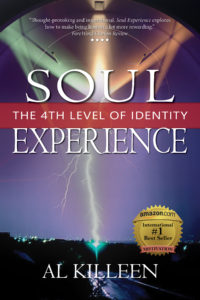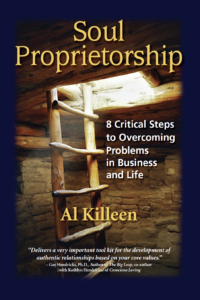Scientific Findings On Happiness (by noted Neuro-Psychologists studying Happiness worldwide; synthesized from the documentary available on Amazon called “Happy”)
The Number One thing people surveyed worldwide want in their lives: TO BE HAPPY!
Happiest Cultures in the World:
– Denmark
– Bhutan
– Okinawa
– Cajuns in Louisianna
Studying identical twins on where happiness comes from:
– 50% determined by our genes (genetic set point – range),
– 10% determined by our circumstances (income, social status, health, wealth, age, where you live, etc.)
– 40% determined unaccounted for (things we can do on a regular basis to become happier that are a result of our choices, perceptions and actions)
What you can do with the 40% that you can influence to make yourself happy:
– Vary what you do in your daily habits, don’t adapt to habits/routine
– Being in “the Zone”; being in a state of “Flow” (where you are focused on personally meaningful activity from complete present-mindedness so that you are focused but relaxed, whether running, painting, communicating, or in any other activity)
– Aerobic activity in varying ways – top release of dopamine
– People exaggerate how long-term both positive or negative events/experiences will impact them, whereas, in fact, people tend to be impacted more deeply short-term by either type of experience, but for a shorter period of time than they anticipate
– The more resiliently and quickly people return to their “set point” of happiness in the face of positive or negative events, the more happy they tend to be over time
– In adversity, people tend to experience setback sadness very deeply but very short term, and they tend to do very well amidst the darkness. Thus, adverse experiences (while uncomfortable) tend to be good for us in that they bring out dimensions within us not found when too comfortable (e.g. resiliency, courage, love, growth, etc.)
– 100% of happy people studied had close friends/family relationships (i.e. people who are isolated or isolate themselves are not happy)
– On Money and Happiness: the difference between $5k and $50k per year matters a lot with people’s happiness (because it moves people beyond Maslow’s lowest level in the hierarchy of needs – survival, to security and relative comfort); but the difference between $50k and $50m per year matters very little (so the premise too many of us have that “more is better” is actually not true)
Other Findings:
– While being connected to other people is a huge element in generating happiness, it is a mistake to make them responsible for your own happiness. It is up to you to do it for yourself
– There are 2 kinds of goals/values in life a person can pursue that will dramatically impact their happiness
o Extrinsic: externals like money, image, status (people who pursue these tend to be less happy and more depressed)
o Intrinsic: inherently satisfying internal values that are pursued and grown, making personal values that are practiced as a key component of happiness)
§ These take three primary forms:
· Personal growth: (constant personal learning, self-challenging, etc.)
· Close connections: (with family/friends and other people in our lives and communities)
· Helping others: (making a difference in the lives of others)
– Other things you can do to make yourself happier:
o Count your blessings and what you are grateful for as a regular, scheduled, focused practice
o Commit acts of kindness regularly and randomly
o Challenge yourself when you are trying to convince yourself that things are bad or getting worse (i.e. entertain the opposing thought of optimism)
Scientific Stuff
Neuropsychologically: the act of cooperating with another human being creates a surge of dopamine and can feel just as exhilarating as a drug that creates euphoria (like cocaine, for instance)
The Happiness Study of “The Happiest Person in the World”
– The person studied and put through various MRI and other medical tests was Matthieu Ricard (born 15 February 1946) who is a French Buddhist monk who resides at Shechen Tennyi Dargyeling Monastery in Nepal.
o Has been a practicing Buddhist Monk for 30+ years
o Has a Ph.D. degree in molecular genetics at the Institut Pasteur. After completing his doctoral thesis in 1972, Ricard decided to forsake his scientific career and concentrate on the practice of Tibetan Buddhism. He lived in the Himalayas studying with the Kangyur Rinpoche and some other great masters of that tradition and became the close student and attendant of Dilgo Khyentse Rinpoche until his death in 1991.
o He has been dubbed the “happiest person in the world” by popular media. Matthieu Ricard was a volunteer subject in a study performed at the University of Wisconsin–Madison’s on happiness, scoring significantly beyond the average obtained after testing hundreds of other volunteers.
– Ricard’s recommendation for daily practicing a Meditation on compassion and loving kindness toward ourselves and others is scientifically proven to be more powerful than anti-depressants
o Changes the brain
o Changes the size of certain areas in the brain associated with happiness
– Ricard’s methodology for how to do it:
o Find a quiet space on a daily basis to take at least 10 minutes and do the following:
§ Close your eyes; sit comfortably
§ Follow your breath
§ Use your mind to focus compassion and loving kindness to the following people for a few minutes each during the 10 minutes in the following progression:
· Yourself
· A good friend or loved one
· A “neutral” person in your life
· A “difficult” person in your life
· All four of the above simultaneously
· Everyone in the world
“Compassion Meditation” research
A few recent psychological studies suggest that loving-kindness meditation may impact health and well-being.
– One study done at Stanford University suggests that a short 7-minute practice of loving-kindness meditation can increase social connectedness.
– Loving-kindness meditation has also been shown to reduce pain and anger in people with chronic lower back pain.
– Researcher Barbara Fredrickson at the University of North Carolina at Chapel Hill found that loving-kindness meditation can help boost positive emotions and well-being in life, fostering the personal resources that come from experiencing positive emotion.
– More research is needed to see whether loving-kindness meditation is appropriate for all populations, whether it works similarly for everyone, and to understand how much practice is needed for the benefits of the practice to manifest.
– An EEG study by Richard J. Davidson of people who practice the Compassion Meditation activity, (with a minimum of 10,000 hours practice), showed substantial differences in the magnitude of gamma waves as well as gamma synchronization, particularly during meditative sessions, and directly afterwards.
– During baseline states, where the subject was not doing the Meditation, there was a signature brain wave pattern that distinguishes the Mediation practitioners, lay people as well as monks, from people, at baseline, who have not extensively practiced Compassion Meditation. This study also showed, during meditation, an increase in the activity of brain areas such as the temporoparietal junction,insula, and amygdala and increase the subject’s ability to see things from another’s perspective, and actually change the area of the brain that is involved the autonomic system so that the meditator’s heartbeat increases. These studies show that the amygdala is modulated during compassion mediation.
– Compassion meditation has been shown to lower the participants reaction to inflammation and distress, both of which are associated with, “major depression, heart disease and diabetes,” in response to stressors, a change that was dependent on the amount of time spent practicing, with practitioners who spent more time meditating having corresponding more significant changes in theirbrains.
Love, Gratitude and Compassion to you all,
Al



